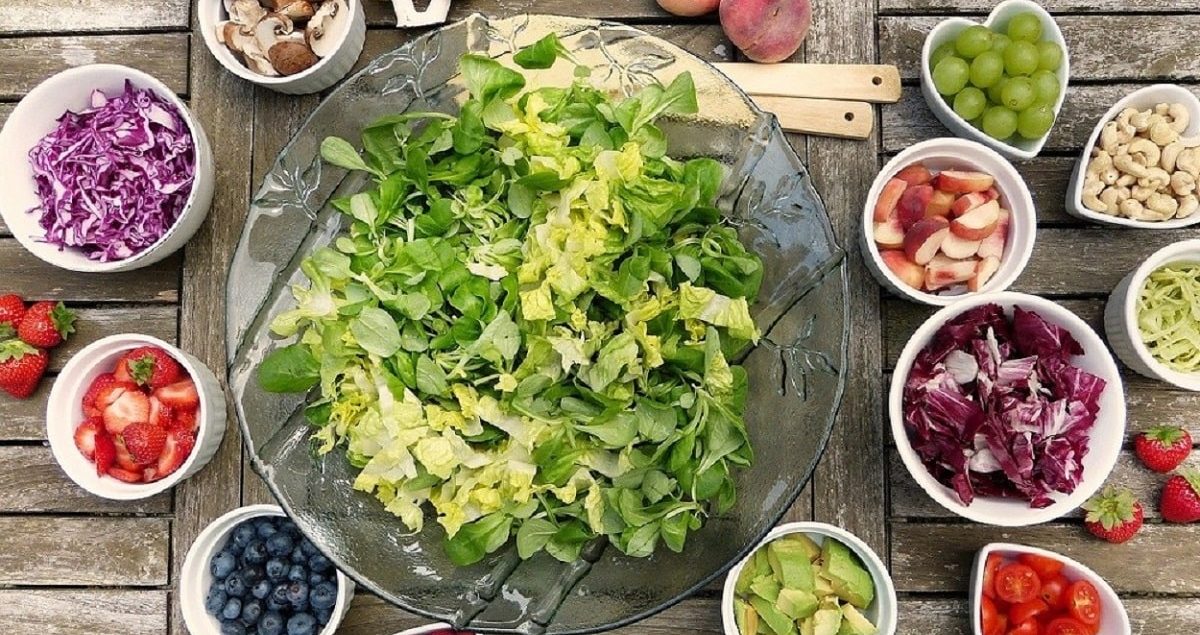Dieta redukcyjna – zanim się zdecydujesz
Dieta redukcyjna wskazana jest osobom z nadmierną masą ciała, nadwagą lub otyłością. Być może nie każdy zdaje sobie sprawę z tego, że otyłość to choroba. W międzynarodowej klasyfikacji chorób, którą posługują się lekarze ma ona swój numer (E-66). Jest to nadmierne nagromadzenie się tkanki tłuszczowej w ciele.
Jeśli myślisz o sobie, że jesteś „grubej kości” – jesteś w błędzie. Osoba otyła ma więcej tkanki tłuszczowej w ciele niż osoba o prawidłowej masie ciała.
Poniżej umieszczam wyniki analizy składu ciała dwóch młodych mężczyzn, o zbliżonym wzroście. Pierwszy z nich waży 80 kg (jest to prawidłowa masa ciała), drugi 150 kg. Masa kostna żadnego z nich nie przekracza 10 kg, natomiast zauważamy diametralną różnicę, jeśli chodzi o zawartość tkanki tłuszczowej (18 % vs 34 %).

Jak sprawdzić masę ciała?
Zanim zdecydujesz się na dietę redukcyjną sprawdź, jaka jest Twoja masa ciała. Jest na to kilka prostych sposobów.
1. Wyliczenie BMI (Body Mass Index, wskaźnik masy ciała) i jego interpretacja na podstawie klasyfikacji zamieszczonej poniżej:

Niedowaga < 18,5
Prawidłowa masa ciała 18,5 – 24,9
Nadwaga 25 – 29,9
Otyłość ≥ 30
Otyłość I stopnia 30 – 34,9
Otyłość II stopnia 35 – 39,9
Otyłość III stopnia (olbrzymia) ≥ 40
np. jeśli ważysz 70 kg przy wzroście 165 cm, Twój BMI wynosi 25,7 kg/m2 i sugeruje nadwagę
2. Możesz zmierzyć swój obwód pasa.
Redukcję masy ciała zaleca się w szczególności, gdy wynosi on ≥ 88 cm u kobiet oraz ≥ 102 cm u mężczyzn. Najkorzystniej byłoby jednak, gdyby obwód pasa u kobiet nie przekraczał 80 cm, natomiast u mężczyzn 94 cm.
3. Możesz również wykonać analizę składu ciała na profesjonalnym urządzeniu.
Analiza taka dostarcza szczegółowych informacji dotyczących budowy Twojego ciała. Pozwala ocenić nie tylko masę ciała, ale też zawartość tkanki tłuszczowej, beztłuszczowej masy ciała, nawodnienie, zawartość masy mięśniowej i kości. Urządzenie zwykle wylicza też wskaźnik masy ciała BMI, ocenia podstawową przemianę materii i zapotrzebowanie energetyczne oraz podaje wiek metaboliczny.
Ile kilokalorii dziennie potrzebuję?
Całkowite zapotrzebowanie energetyczne, czyli ilość kilokalorii, których potrzebujesz w ciągu dnia zależy od kilku czynników, m.in. płci, wieku, masy ciała i wzrostu, a także aktywności fizycznej. Można je wyliczyć, korzystając ze wzorów podanych poniżej.
Jeśli Twój wskaźnik BMI wynosi 25 lub więcej, kaloryczność dziennego jadłospisu powinna być obniżona w stosunku do Twojego całkowitego zapotrzebowania o około 500-800 kcal. To pomoże Ci schudnąć w BEZPIECZNY i ZDROWY sposób. Pamiętaj, że celem jest POWOLNY i STOPNIOWY ubytek masy ciała, wynoszący średnio 0,5 – 1 kg tygodniowo.
Krok 1 – Zaczynamy od wyliczenia podstawowej przemiany materii (PPM). Należy wziąć pod uwagę, że wzory pozwalają określić zapotrzebowanie energetyczne jedynie w pośredni sposób i nie uwzględniają innych czynników, które mogą mieć wpływ na przemianę materii (m.in. stan zdrowia, czynniki genetyczne, stan fizjologiczny, temperatura otoczenia, stan odżywienia organizmu…). Proponuję skorzystać ze wzoru Mifflina – St. Jeora. Wzór ten uwzględnia płeć, aktualną masę ciała, wzrost oraz wiek.
PPM dla kobiet = (10 x aktualna masa ciała [kg]) + (6,25 x wzrost [cm]) – (5 x wiek [lata]) – 161
PPM dla mężczyzn = (10 x aktualna masa ciała [kg]) +(6,25 x wzrost [cm]) – (5 x wiek [lata]) + 5
np. PPM kobiety 50 letniej, o masie ciała 90 kg i wzroście 165 cm wynosi 1520 kcal
(10 x 90) + (6,25 x 165) – (5 x 50) – 161 = 900 + 1031 – 250 – 161 = 1520 kcal
Krok 2 – Pomnóż wyliczoną wartość podstawowej przemiany materii (PPM) o dopasowany do Twojej aktywności fizycznej współczynnik aktywności fizycznej (PAL, Physical Activity Level). W ten sposób dowiesz się, jakie jest Twoje całkowite zapotrzebowanie energetyczne.
1,2 – 1,3 niska aktywność fizyczna, brak dodatkowych ćwiczeń
1,4 – 1,5 dodatkowa, niezbyt intensywna, niewielka aktywność fizyczna
1,6 – 1,7 praca wymagająca dodatkowej aktywności fizycznej
1,8 – 1,9 praca stojąca
2,0 – 2,4 ciężka praca fizyczna
np. kobieta z opisu powyżej ma siedzącą pracę, nie ćwiczy (mnożymy 1520 kcal x współczynnik 1,3). Jej całkowite zapotrzebowanie energetyczne wynosi 1976 kcal.
Krok 3 – Pomniejsz swoje całkowite zapotrzebowanie energetyczne o około 500 – 800 kcal, aby osiągnąć deficyt kaloryczny i doprowadzić do stopniowej redukcji masy ciała
np. kobieta z opisu powyżej, aby doprowadzić do spadku masy ciała powinna zastosować kaloryczność swojego jadłospisu 1200-1500 kcal.
Autor tekstu:

